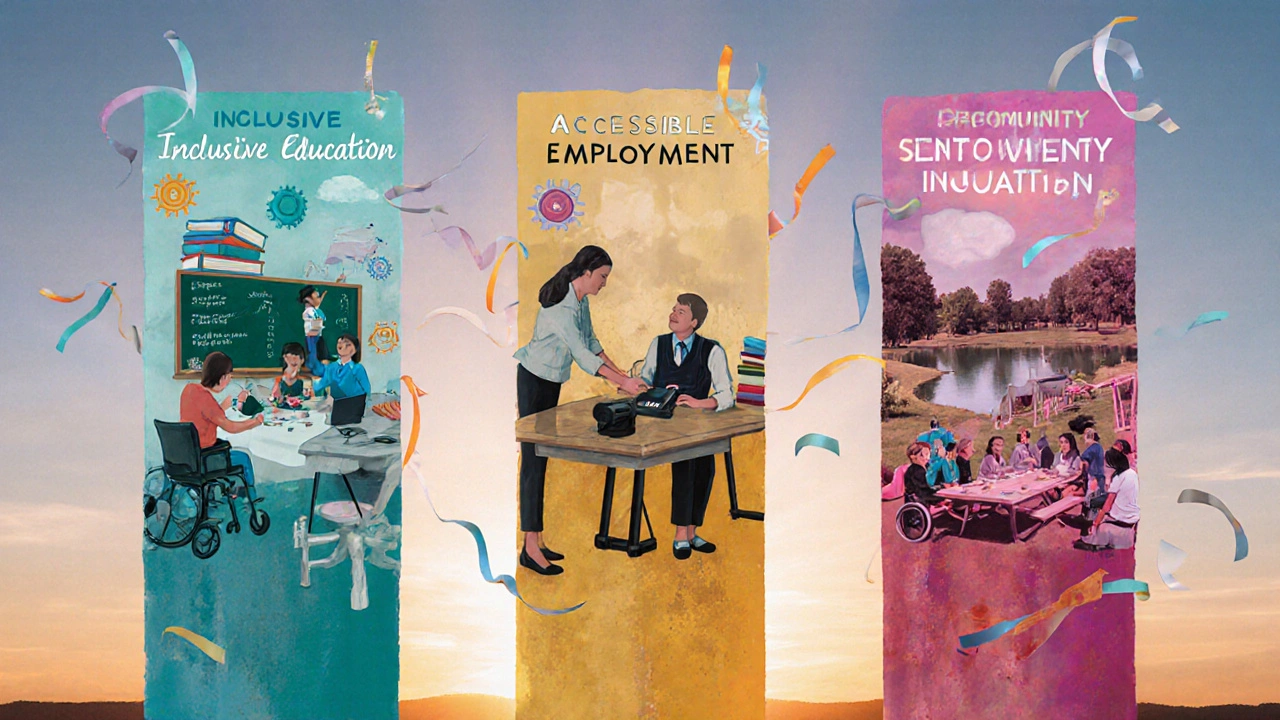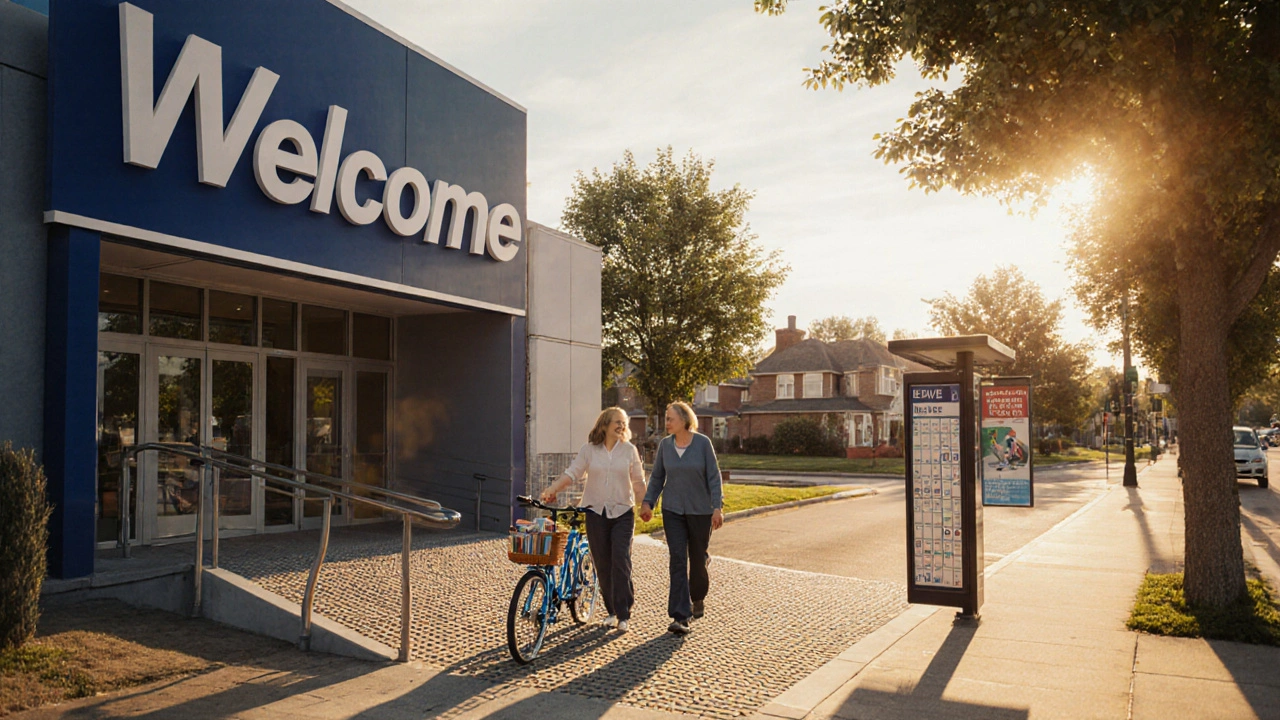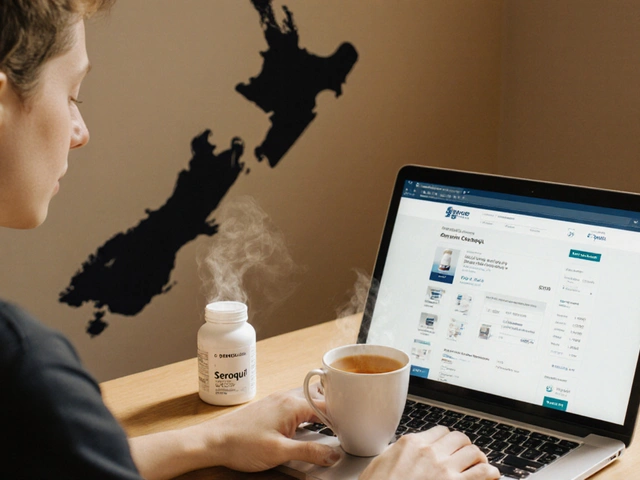Community Inclusion Checklist
Assess Your Community's Inclusivity
Use this checklist to evaluate how welcoming your neighborhood is for people with intellectual disabilities. Answer each question and see your overall inclusion score.
Your Inclusion Score
Key Takeaways
- Inclusive environments boost mental health and skill development for people with intellectual disabilities.
- Education, employment, and recreation are the three pillars that drive lasting community participation.
- Families, schools, and local businesses each play a specific role in creating accessible opportunities.
- Simple checklists help neighborhoods evaluate how welcoming they really are.
- Avoiding common pitfalls-like tokenism and inaccessible venues-keeps inclusion genuine.
When we talk about community inclusion the active participation of all members of society, regardless of ability, in everyday activities, relationships, and decision‑making, the goal is simple: nobody should feel left out because of a cognitive or learning difference. For people with intellectual disability a condition characterized by limitations in intellectual functioning and adaptive behavior that originates before adulthood, inclusion isn’t a nice‑to‑have-it’s a lifeline that connects them to friends, skills, and purpose.
Why Inclusion is a Game‑Changer
Research from New Zealand’s Ministry of Health (2024) shows that individuals who regularly engage in community activities report 30% lower rates of anxiety and depression compared with those who remain isolated. The numbers aren’t just statistics; they translate into brighter days for families, lower support costs for the state, and richer cultural life for everyone.
Beyond mental health, inclusion builds practical abilities. When a person with an intellectual disability joins a local sports club, they learn teamwork, time management, and communication-skills that transfer to the workplace and home. In fact, a 2023 Auckland study found that participants in inclusive recreation programs were 45% more likely to secure part‑time employment within a year.
Three Pillars that Hold Up Inclusion
- Inclusive Education: Schools that adopt differentiated instruction and peer‑mediated learning give students with intellectual disabilities access to the same curriculum as their peers. This approach not only improves academic outcomes but also normalizes diversity from a young age.
- Accessible Employment: Employers who adapt job tasks, provide on‑site support, and cultivate a culture of respect see higher retention rates. The Disability Act legislation that mandates reasonable accommodations in the workplace offers a legal backbone, but true success comes from tailored mentorship programs.
- Social Recreation: Community centres, libraries, and sports clubs that follow universal design principles create spaces where everyone can participate without extra steps. Simple changes-like clear signage, low‑step entrances, and flexible scheduling-make a huge difference.
How Families Can Foster Inclusion at Home
Parents and caregivers often worry about over‑protecting their loved ones. The key is to balance safety with autonomy. Start by encouraging your child to join neighborhood events, even if it’s just a short visit to the local park. Use visual schedules to outline what will happen, which reduces anxiety. When you notice a barrier (for example, a noisy venue), speak up and suggest accommodations like a quiet corner or ear‑protection.
Another powerful tool is peer support a network of individuals who share similar experiences and provide mutual encouragement. Connecting families to local support groups creates a safety net and offers practical tips from those who have walked the path.

Community Roles: Who Can Make a Difference?
Inclusion isn’t the responsibility of a single stakeholder. Here’s how different groups can contribute:
- Businesses: Offer flexible shift patterns, create mentorship spots, and train staff on disability awareness. A small café in Wellington that introduced a “buddy barista” program saw a 20% increase in repeat customers who valued the inclusive vibe.
- Non‑profits & Advocacy Groups: Organizations like Disability Advocacy NZ a national coalition that lobbies for rights and provides resources for people with disabilities supply training kits, host community fairs, and push for policy change.
- Local Government: Invest in accessible public transport, fund inclusive playgrounds, and enforce building codes that require ramps and tactile paving.
- Schools: Implement universal design for learning (UDL) and pair students with and without disabilities for joint projects.
Practical Checklist for a More Inclusive Neighborhood
Use this quick audit to see where your area stands and where it can improve:
- Are public venues sign‑posted with clear, high‑contrast lettering?
- Do community events offer sensory‑friendly options (quiet rooms, low lighting)?
- Is there a local volunteer coordinator who matches people with intellectual disabilities to suitable activities?
- Are transportation schedules posted in plain language and available in braille or large print?
- Do local employers list accommodation policies on their websites?
Mark each item as Yes/No/Needs Improvement. The more Yeses, the stronger the inclusion fabric.
Formal Programs vs. Informal Activities
| Aspect | Formal Programs | Informal Activities |
|---|---|---|
| Funding Source | Government grants, NGOs | Volunteer‑driven, small donations |
| Scheduling | Set calendar (weekly, monthly) | Ad‑hoc, based on community interest |
| Professional Support | Specialists (therapists, educators) | Peer mentors, family volunteers |
| Scalability | High - can serve dozens | Variable - often limited by manpower |
| Risk of Tokenism | Moderate - must monitor intent | Higher - casual inclusion may be superficial |
Common Pitfalls and How to Dodge Them
Tokenism: Inviting someone only for the photo doesn’t create genuine belonging. Counter this by assigning real responsibilities-like leading a workshop or co‑designing an event.
Inaccessible Venues: A venue might appear “open to all” but lack ramps or clear signage. Conduct an accessibility walk‑through before confirming the location.
Assuming One‑Size‑Fits‑All: People with intellectual disabilities have diverse strengths and challenges. Use person‑centered planning to match activities to individual preferences.
Next Steps for Readers
If you’re a caregiver, start a dialogue with your local council about sensory‑friendly hours at the community centre. If you run a small business, draft a short inclusion policy and share it with staff in the next meeting. If you’re a neighbor, simply ask a friend with an intellectual disability if they’d like to join you for a coffee-often the smallest invitation sparks lasting connections.

Frequently Asked Questions
How can schools make lessons inclusive for students with intellectual disabilities?
Schools can adopt universal design for learning, break tasks into small steps, use visual aids, and pair students with peer mentors. Training teachers in differentiation and providing on‑site support staff further bridges gaps.
What are low‑cost ways for a community centre to become more accessible?
Start with clear signage, remove trip hazards, offer quiet corners, and schedule sensory‑friendly hours. Simple paint‑on tactile strips and portable ramps can be sourced from local charities at minimal expense.
Is it better to join a formal program or a casual community group?
Both have value. Formal programs provide professional support and consistent schedules, while informal groups offer flexibility and real‑world social practice. Ideally, blend the two to cover skill development and spontaneous interaction.
How does inclusive employment benefit employers?
Employers gain diverse perspectives, higher employee morale, and often see lower turnover. Studies in New Zealand show that workplaces with inclusive hiring practices experience a 12% boost in customer satisfaction scores.
Where can families find peer‑support networks?
Local NGOs such as Disability Advocacy NZ, regional health boards, and online platforms like the New Zealand Disability Forum host regular meet‑ups, both virtual and in‑person.




![Sartel (Telmisartan) Uses, Dosage, Side Effects, Interactions [2025 Guide]](/uploads/2025/08/thumbnail-sartel-telmisartan-uses-dosage-side-effects-interactions-2025-guide.webp)

Written by Martha Elena
I'm a pharmaceutical research writer focused on drug safety and pharmacology. I support formulary and pharmacovigilance teams with literature reviews and real‑world evidence analyses. In my off-hours, I write evidence-based articles on medication use, disease management, and dietary supplements. My goal is to turn complex research into clear, practical insights for everyday readers.
All posts: Martha Elena